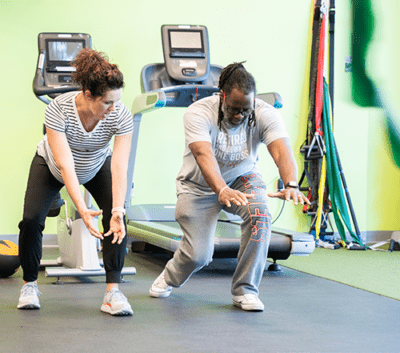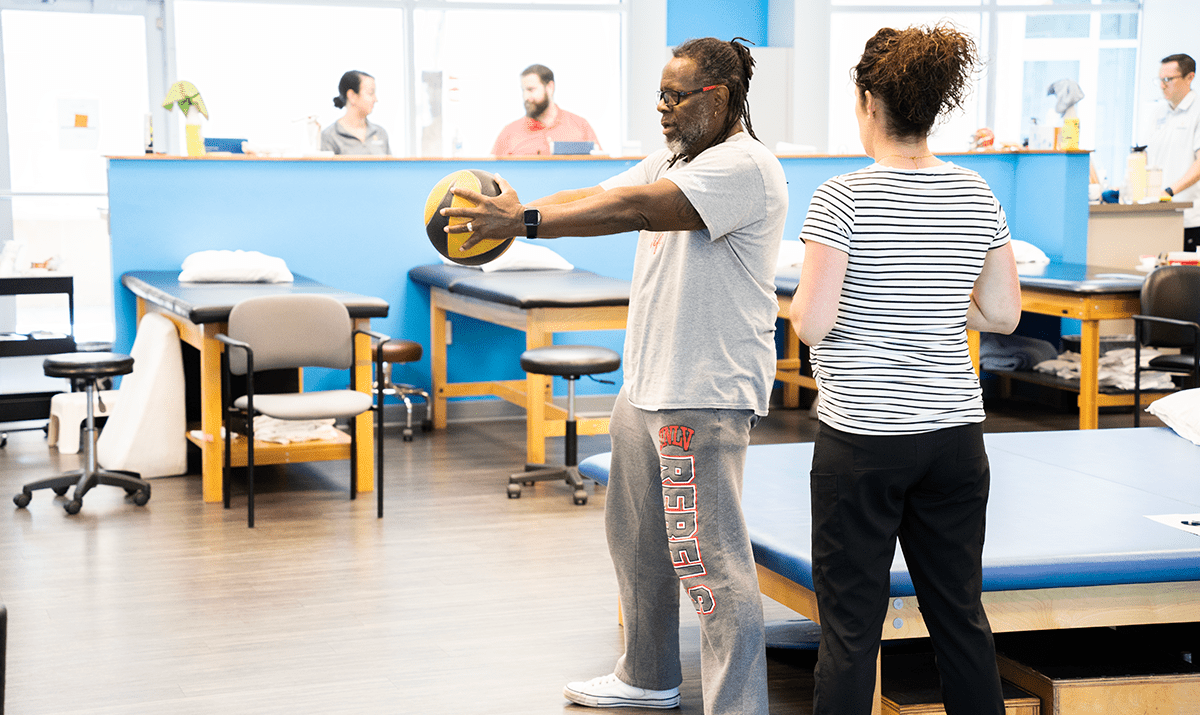By: Carrie Yaeger, PT, DPT, PRPC
The pelvic floor is often attributed as an issue that solely affects female athletes. This is not the case. Males, like females, have pelvic floors that work to help them perform athletically. However, it is largely overlooked.
The male pelvic floor is a group of 10 muscles that spans the length of the entire pelvis and attaches in many different parts of the pelvis in addition to many of the common hip and abdominal muscles that provide a significant amount of stability for daily and sport-related movements. The pelvic floor is responsible for load transfer and overall support of our entire trunk from the bottom up. If we don’t address it, the surrounding areas may not fully heal.

THE CORE
The pelvic floor is part of your core musculature. Your core acts as a cannister that contains the diaphragm, abdominal wall, pelvic floor, hips, and back. All need to be working together to have an efficient system.
The core is integral in many of our bodily movements and supports many other structures in our body. In terms of the lower half of the body, the hips, back, groin, core are all working together to provide stability for standing, sitting, walking, running, jumping, and more. If one of these areas is injured or not moving properly, the others nearby can easily become affected because they are either trying to “pick up the slack” or trying to protect the rest of the body.
Often times, the pain we actually feel in the low back, hips, or the abdominal wall is actually being referred from the pelvic floor, but traditionally we continue to treat the other areas first. While you may experience a little relief, if the root pain is in the pelvic floor, full relief won’t be found unless the pelvic floor is addressed. The pelvic floor is often the missing link when treating an athlete.
SPORTS HERNIAS
Sports hernias commonly affect adductors, obliques, or rectus abdominus. These muscles are closely interrelated to the pelvic floor. The adductors attach to one side of the pubic rami bones and the pelvic floor to the other side. The obliques attach to the innominate which also closely attaches to the pelvic floor. The rectus abdominus attaches to the pubic symphysis which is very close to the bladder and can cause urinary discomfort or other pelvic girdle discomfort or changes in function.
In embryological development, the male genitalia are the first to develop within the abdominal cavity. Therefore, injury to any of the abdominal muscles can refer pain to the pelvic girdle and genitalia. In addition, if any of these muscle groups or any others are injured, a change in movement and stability with occur, so the body must regain that from somewhere in the body to keep moving how we need to so will often pull in more support from the pelvic floor.
Sports hernias can be fixed surgically, but a conservative route with pelvic floor physical therapy can be a good option to cover before opting for surgery. Surgery may have an impact on a structural deformity, but it doesn’t always guarantee that it will address the pain or movement dysfunction. Addressing the pelvic floor prior to surgery may not prevent the surgery all together, but it can have a positive impact on outcomes if surgery is ultimately warranted. Trying therapy first just allows us to see what actually is contributing to the pain or discomfort.
Even though the structures in the pelvic girdle are in a very personal area, they are still muscles, bones, ligaments, tendons like any others in our body that connect to more of our outer structures that we think of on a regular basis. If we don’t address everything, it is very hard to fully heal. Think about if you injured your rotator cuff. If you don’t address all of the areas around it- back, neck, arm, etc., then you may not reach your full potential and still experience discomfort. While the tissue heals from the core surgery (or any procedure), the tissue around it still guards to protect your body overall so needs to be addressed for optimal recovery.
If you were referred to physical therapy to address pain elsewhere in your body, but you and your therapist determined your pain is due to a pelvic floor issue, you can still work with your orthopedic physical therapist while waiting to get a referral to a pelvic floor physical therapist. A lot of pelvic girdle pain, especially in male athletes, originates from the abdominal wall, low back or hip flexors. If you start there, you may be able to relieve some of the symptoms. Ortho PTs are movement experts who can work with you to relieve pain in the area you are experiencing it while also gaining strength.
Male pelvic floor physical therapy can be the missing link to help you perform your best. If you are struggling to recover from pain or think you could benefit from pelvic floor physical therapy, schedule an appointment today!

